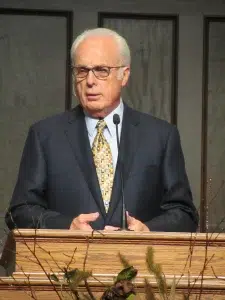Washington state has paid out more than half a billion dollars in lawsuit settlements and verdicts over the past year, as a wave of legal claims against state agencies continues to grow, the Port Townsend Leader reported yesterday.
The payouts mostly resolve cases involving abuse and neglect within the foster care and juvenile detention systems. Much of the legal liability stems from a landmark 2018 court ruling, which expanded the state’s responsibility for foster children beyond the period in which the state has direct custody. That case involved five girls who endured years of abuse while living with foster parents in Eatonville. The court’s decision created new legal ground for others harmed by state negligence to seek compensation.
Since then, Washington’s tort liability costs have soared. The state paid out $72 million in fiscal year 2018. In the fiscal year ending June 30, 2024, that number jumped to over $281 million. But the trend has accelerated even more: with just weeks remaining in the current fiscal year, Washington had already spent nearly $502 million, according to the state attorney general’s office. “FY 2023 was a record. FY 24 is a record,” said a spokesperson. “FY 25 is going to be bigger than FY 23 and FY 24 combined.”
Unlike many states, Washington does not cap the damages it can be required to pay in civil lawsuits. The increase in payouts includes claims involving wrongful termination, discrimination, prison deaths, and mishandled abuse investigations—some of which date back to the 1950s. A plaintiff’s attorney who has represented numerous claimants called the financial data a reflection of the “human misery index involved” and emphasized the moral and legal obligation of the state to provide restitution. He described state decisions that placed vulnerable children into “houses of horrors,” resulting in deep and lasting trauma.
Legal defense costs have risen alongside settlement totals. In fiscal year 2024, the state spent nearly $50 million on legal defense, with more than a third going to outside law firms. This year, that number has already increased to over $56 million, according to the Department of Enterprise Services. Because Washington is self-insured, these payouts come directly from agency budgets that would otherwise fund services and programs.
In response, state Senate Republicans introduced legislation to require public hearings any time a payout exceeds $1 million. The bill did not advance. Still, lawmakers and agency officials acknowledge the primary driver of claims: the Department of Children, Youth and Families (DCYF), which oversees child welfare, foster care, and juvenile justice. In fiscal year 2024 alone, nearly two-thirds of claims filed against DCYF stemmed from incidents occurring before the year 2000, making records hard to obtain and cases difficult to defend. “We are seeing that sort of historic look back, making atonement, reconciling wrongdoing, frankly, on behalf of the state when appropriate,” said the department’s public affairs director.
Recent legal developments suggest the state’s liability could grow. In 2024, Washington eliminated the statute of limitations for civil claims involving childhood sexual abuse that occur after June of that year. In May 2025, the state Supreme Court expanded the statute of limitations for some additional types of claims. These changes open the door for more survivors to file lawsuits.
One law firm has filed roughly 800 claims involving sexual abuse in state-run juvenile detention centers, spanning decades. Lawmakers have taken notice. “I hear, on the radio, advertisements almost every day encouraging people who may have been harmed in juvenile facilities to reach out to whatever legal company is running the ads,” said state Sen. Keith Wagoner, R-Sedro-Woolley. “So it seems like it’s sort of become a cottage industry. Not that that isn’t probably a good thing if people have been harmed.”
Survivors of institutional sexual abuse can learn more about their legal rights and how to file a claim by visiting this detailed guide.




